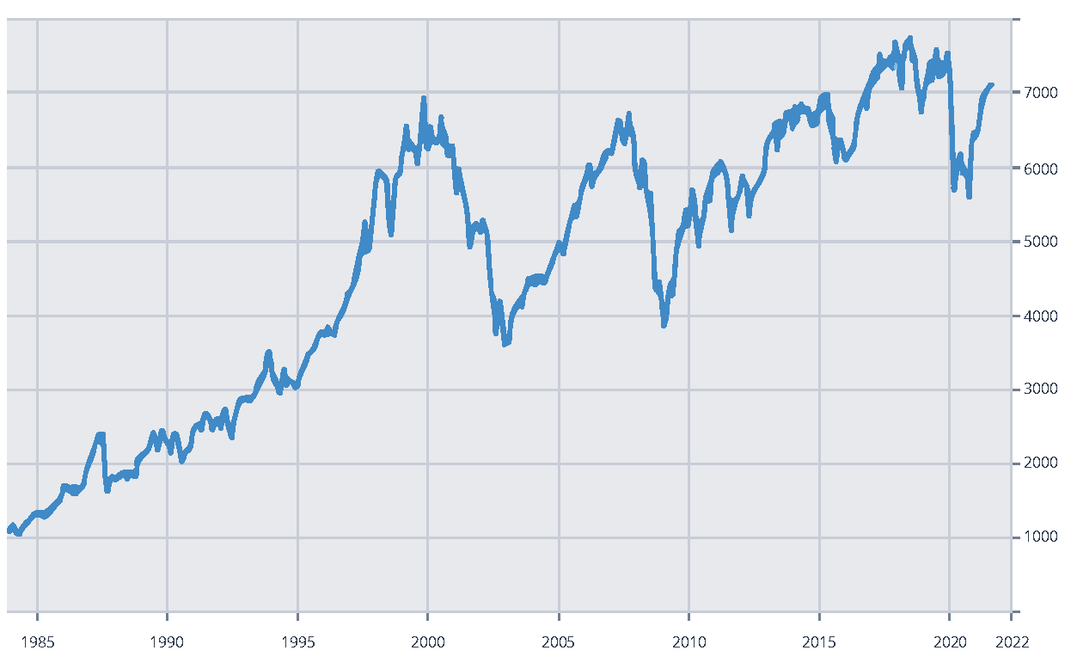Economic review September 2024
On markets at the end of September, with investors and traders closely monitoring regional developments.
At month end, stocks retreated following implications from Federal Reserve Chairman Jerome Powell that further interest rate cuts are likely to occur at a more measured pace.
Across the pond, the Dow Jones closed the month up 1.85% on 42,330.15. The tech-orientated NASDAQ closed the month up 2.68% on 18,189.17.
On home shores, the FTSE 100 index closed the month on 8,236.95, a loss of 1.67%, while the FTSE 250 closed the month 0.16% lower on 21,053.19. The FTSE AIM closed on 740.43, a loss of 4.15% in the month. The Euro Stoxx 50 closed the month on 5,000.45, up 0.86%. In Japan, the Nikkei 225 closed September on 37,919.55, a monthly loss of 1.88%.
On the foreign exchanges, the euro closed the month at €1.20 against sterling. The US dollar closed at $1.33 against sterling and at $1.11 against the euro.
Brent crude closed September trading at $71.65 a barrel, a loss over the month of 6.74%. The conflict in the Middle East is causing some price volatility. OPEC+ plans to begin increasing production in December is pressurising prices, while weak demand in China also weighs. Gold closed the month trading at $2,629.95 a troy ounce, a monthly gain of 4.64%. Prices retreated at month end, reversing recent strong gains as increased safe-haven demand prompted a rally in the precious metal.
Index | Value (30/09/24) | Movement since 30/08/24 |
| FTSE 100 | 8,236.95 | -1.67% |
| FTSE 250 | 21,053.19 | -0.16% |
| FTSE AIM | 740.43 | -4.15% |
| Euro Stoxx 50 | 5,000.45 | +0.86% |
| NASDAQ Composite | 18,189.17 | +2.68% |
| Dow Jones | 42,330.15 | +1.85% |
| Nikkei 225 | 37,919.55 | -1.88% |
Retail sales stronger than expected
The latest official retail sales statistics revealed a healthy growth in sales volumes during August, while more recent survey data points to further modest improvement both last month and in October.
Figures released by ONS showed that total retail sales volumes rose by 1.0% in August, following upwardly revised monthly growth of 0.7% in July. ONS reported that August’s rise, which was higher than economists had predicted, was boosted by warmer weather and end-of-season sales.
Evidence from last month’s CBI Distributive Trades Survey also suggests retailers expect the summer sales improvement to have continued into the autumn period, with its annual retail sales gauge rising to +4 in September from -27 in August. In addition, retailers’ expectations for sales in the month ahead (October) rose to +5; this represents the strongest response to this question since April 2023.
CBI Principal Economist Martin Sartorius said retailers would “welcome” the modest sales growth reported in the latest survey. He also added a note of caution saying, “While some firms within the retail sector are beginning to see tailwinds from rising household incomes, others report that consumer spending habits are still being affected by the increase in prices over the last few years.”
National debt looks set to soar
Analysis published last month by the Office for Budget Responsibility (OBR) suggests national debt could triple over the coming decades if future governments take no action.
In its latest Fiscal Risks and Sustainability Report, the OBR said debt is currently on course to rise from almost 100% of annual GDP to 274% of GDP over the next 50 years due to pressures including an ageing population, climate change and geopolitical risks. It also warned that, without any change in policy or a return to post-war productivity levels, the public finances were unsustainable over the long term, and that ‘something’s got to give.’
The OBR is also tasked with producing a more detailed five-year outlook for the country’s finances that will be published alongside Chancellor Rachel Reeves’ first Budget, due to be delivered on 30 October. The Chancellor has previously warned the Budget will involve “difficult decisions” on tax, spending and welfare.
Data released last month by ONS showed that government borrowing in August totalled £13.7bn, the highest figure for that month since 2021. This took borrowing in the first five months of the financial year to £64.1bn, £6bn higher than the OBR forecast at the last Budget.
All details are correct at the time of writing (1 October 2024)
It is important to take professional advice before making any decision relating to your personal finances. Information within this document is based on our current understanding and can be subject to change without notice and the accuracy and completeness of the information cannot be guaranteed. It does not provide individual tailored investment advice and is for guidance only. Some rules may vary in different parts of the UK. We cannot assume legal liability for any errors or omissions it might contain. Levels and bases of, and reliefs from taxation are those currently applying or proposed and are subject to change; their value depends on the individual circumstances of the investor. No part of this document may be reproduced in any manner without prior permission.
This material is intended for information purposes only and is not intended as an offer or solicitation for the purchase or sale of any financial instrument. Tees is a trading name of Tees Financial Limited, which is regulated and authorised by the Financial Conduct Authority. Registered number 211314.
Tees Financial Limited is registered in England and Wales. Registered number 4342506.


